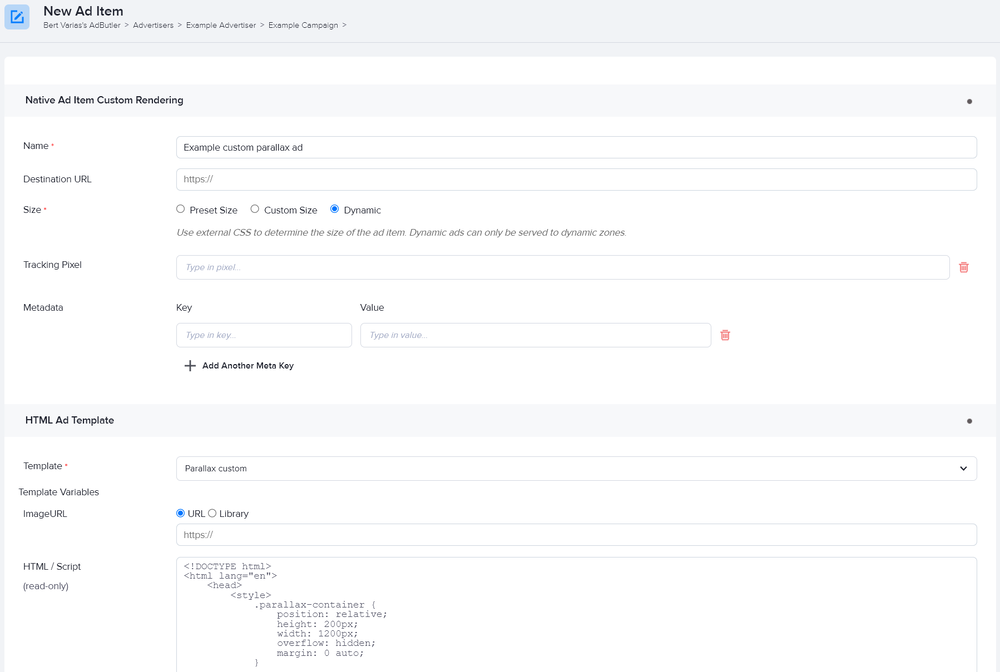How to make custom native parallax ads
Parallax ads are ads that show only part of their content in their container. They reveal the other portions of the content as the viewer scrolls through the page. If the viewer scrolls down, the container pans down as well, and vice-versa. Parallax ads can contain an image or other HTML content. You can use native templates to create parallax ad items that are tailored to your needs.
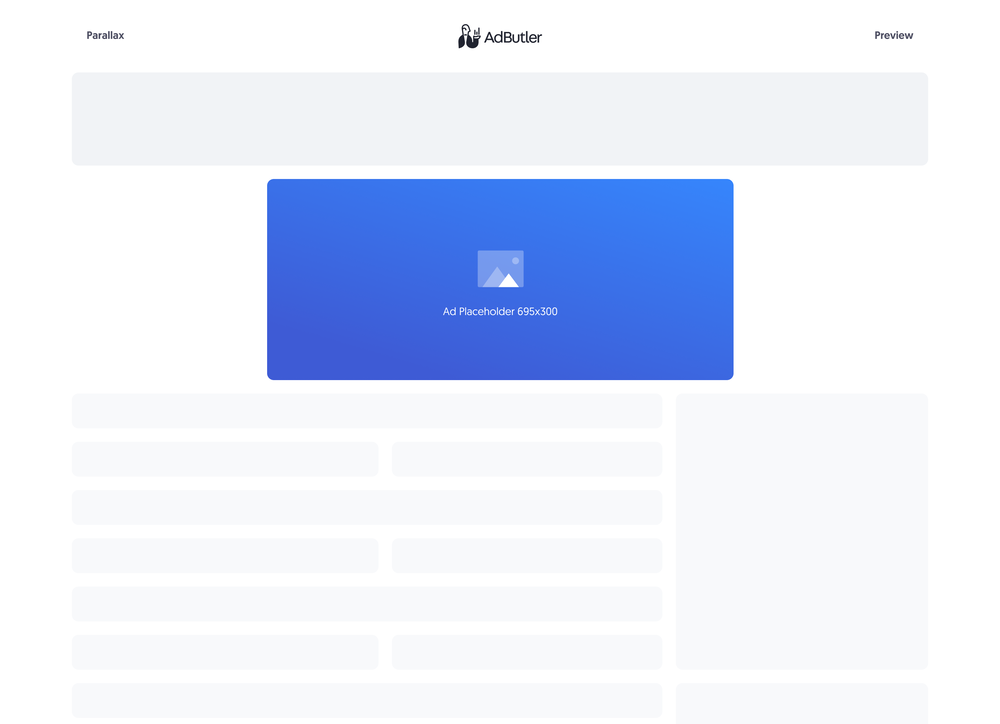
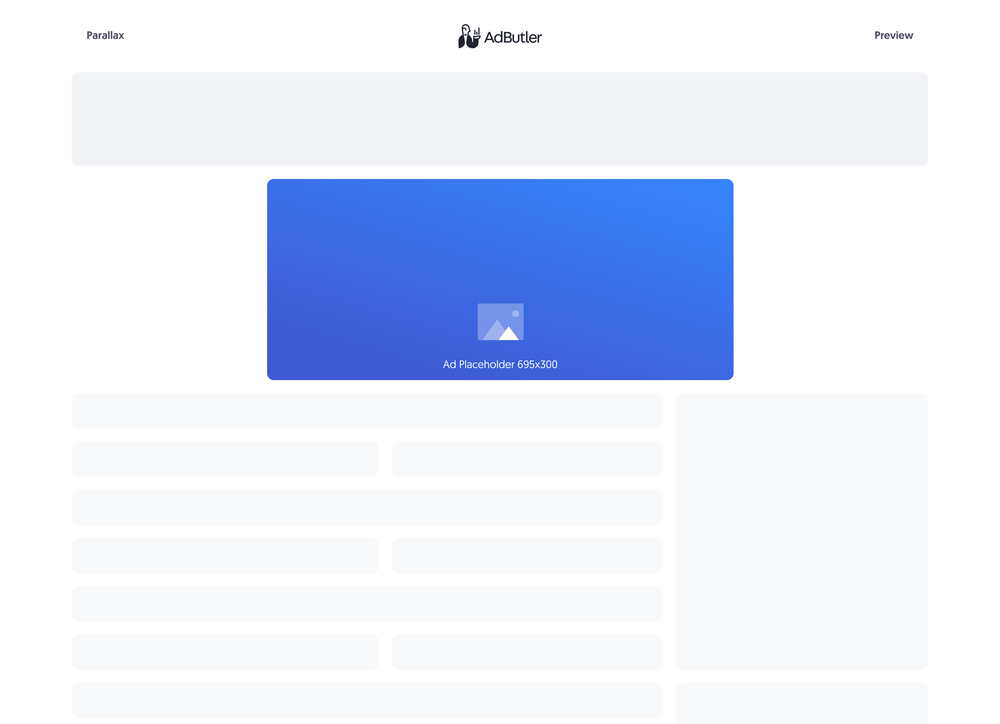
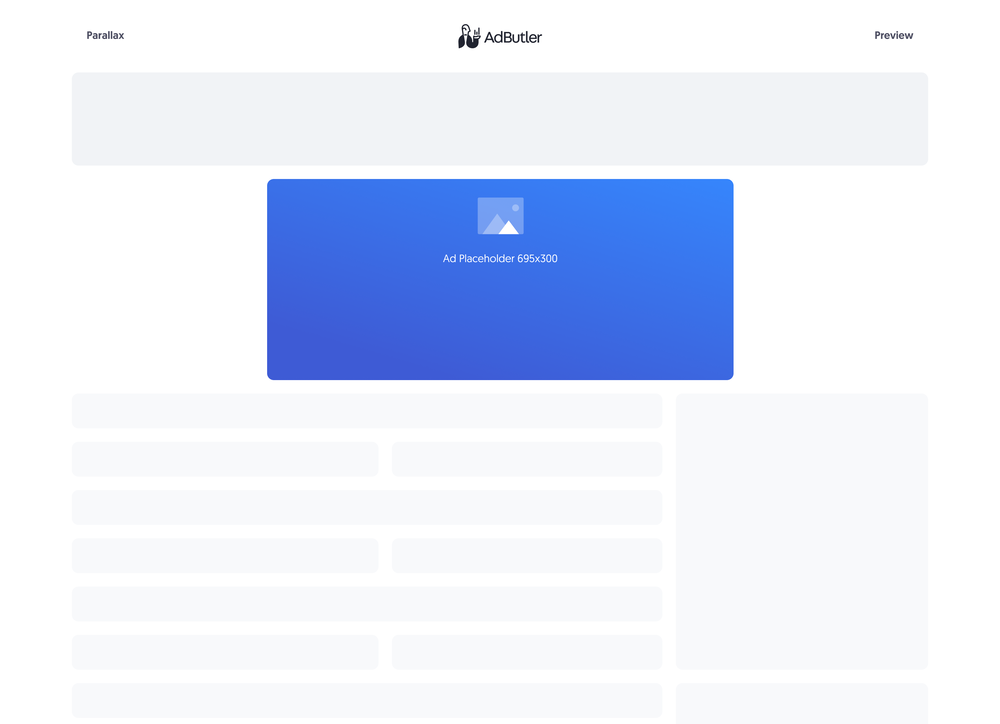
If you'd rather sanitize the template and have only HTML inside it, you should make your parallax ad using a styled native ad template instead. For more information on the differences between custom native ads and styled native ads, read About native ad templates.
You will learn:
- How to create a template for a custom parallax ad. You can customize the sample code to fit your needs.
- How to create a custom parallax ad item once you have a custom parallax template.
How to create a custom parallax ad template
This template will require the user to provide the URL to where the image creative is hosted when creating the parallax ad item. Our sample will have an image, but you should use the appropriate variable depending on the content that you want to use.
- Click Templates in the left navigation menu. The Templates section will appear.
- Click Native Ad Templates. The Native Ad Templates subsection will appear.
- Click Add Native Ad Template. The New Native Template window will appear.
- Click Custom Rendering/API. The New Native Ad Template page will appear.
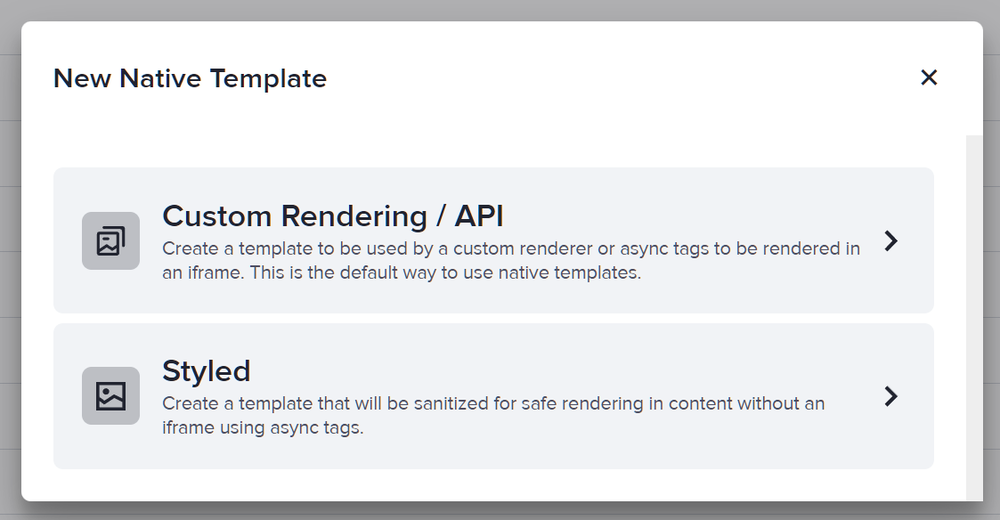
- Name the template then add an image URL variable. In our sample code, we called this variable ImageURL.
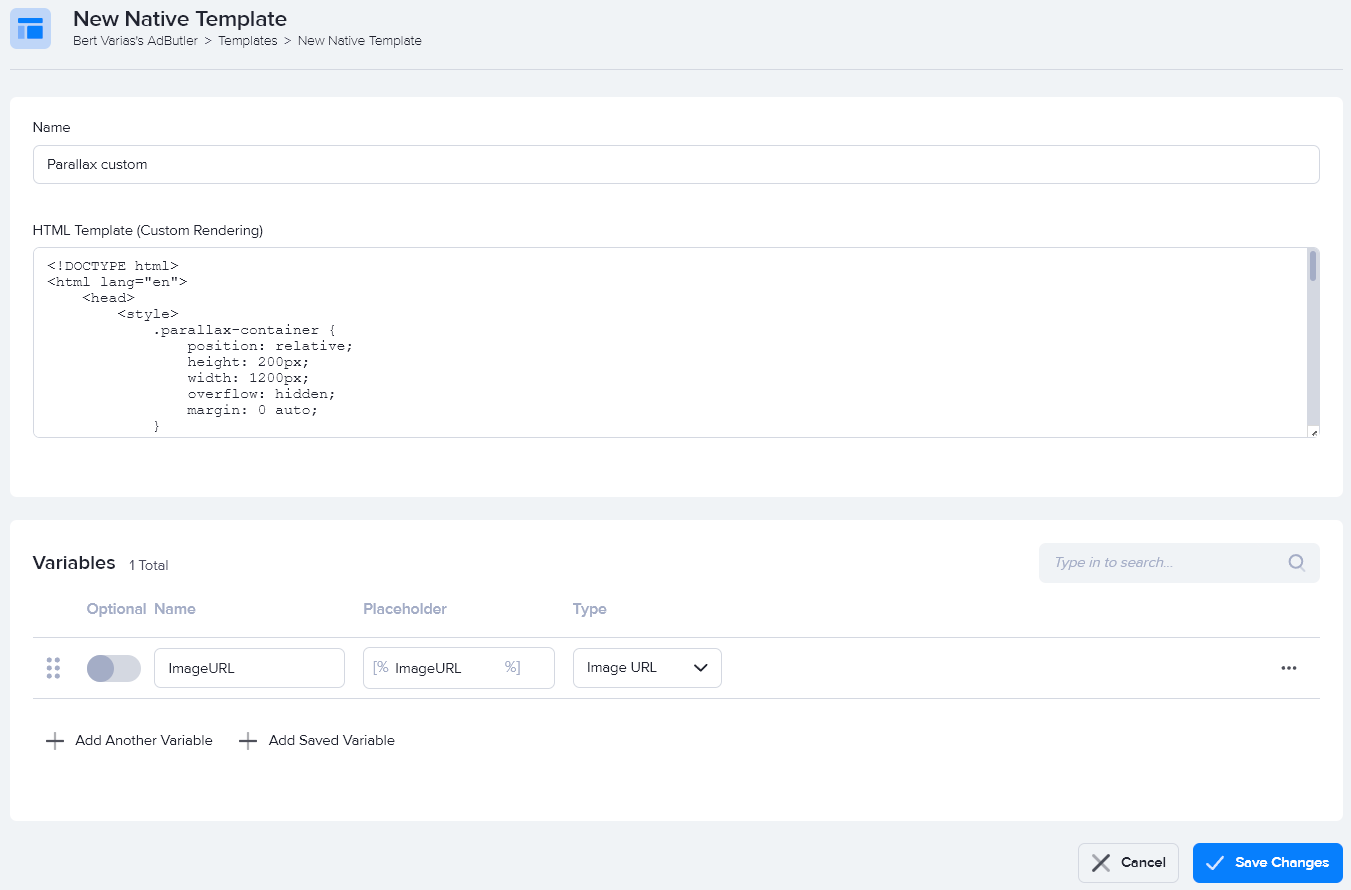
- Enter the code in the HTML Template (Custom Rendering) field, then click Save Changes.
Here's the code we used in our example. For this example to appear correctly, the width of the ad container must be set to 100%:
<!DOCTYPE html>
<html lang="en">
<head>
<style>
.parallax-container {
position: relative;
height: 200px;
width: 1200px;
overflow: hidden;
margin: 0 auto;
}
.parallax {
height: 100%;
width: 100%;
background-attachment: fixed;
background-position: center;
background-repeat: no-repeat;
background-size: contain;
}
.parallax-close-button-container {
position: absolute;
top: 5px;
right: 5px;
cursor: pointer;
margin: 0;
display: flex;
align-items: center;
}
.parallax-close-button {
width: 21px;
text-align: center;
display: inline-block;
color: #ffffff;
font-size: 18px;
background: #000000;
border-radius: 21px;
user-select: none;
}
</style>
</head>
<body>
<div class="parallax-container">
<div class="parallax" style="background-image:url('[%ImageURL%]')"></div>
<div class="parallax-close-button-container">
<span class="parallax-close-button" onclick="closeButton()">×</span>
</div>
</div>
<script>
function closeButton() {
document.querySelector('.parallax-container').style.display = 'none';
}
</script>
</body>
</html>
You can now use this template to create a custom parallax ad item.
How to create a custom parallax ad item
Parallax ads require adequate content above and below the ad for the full parallax effect to be seen.
- Go to the section of the relevant zone (Your AdButler > Publishers > Your Publisher > Your Zone) or campaign (Your AdButler > Advertisers > Your Advertiser > Your Campaign).
- Click Add Ad Item in the Ad Items table. The Add Ad Item window will appear.
- Click Native (Custom Rendering/API). The New Ad Item page will appear.
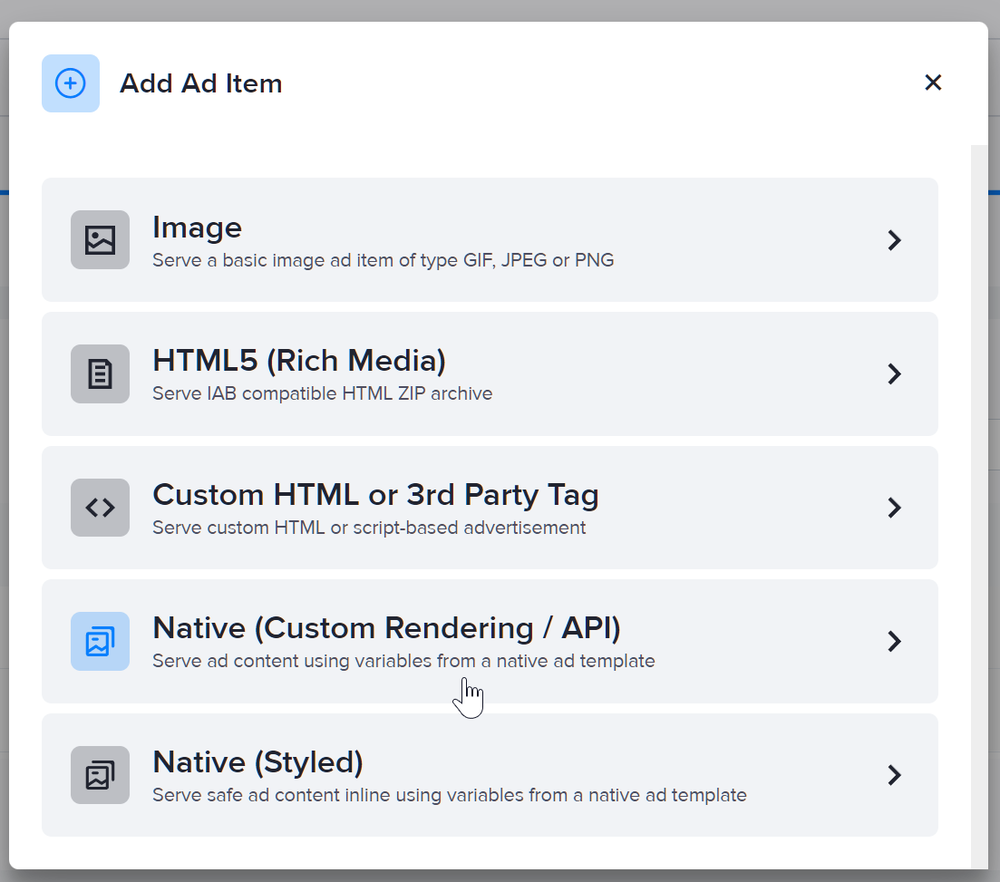
- Set the ad item's size to Dynamic.
- Select your parallax custom native ad template in the Template dropdown menu.
- Fill in the rest of the fields as needed, including the image URL. If you entered a destination URL, you can test it by clicking Open Destination URL to the right of the field.
- Click Save Ad Item.
